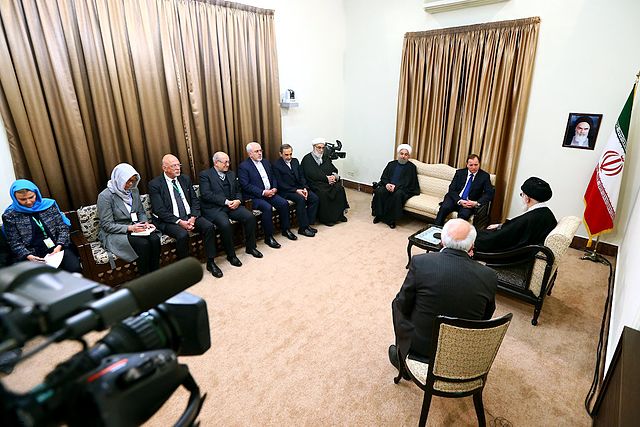Foreign relations of Iran
Geography is an important factor in informing Iran's foreign policy. Following the 1979 Iranian Revolution, the newly formed Islamic Republic, under the leadership of Ayatollah Khomeini, dramatically reversed the pro-American foreign policy of the last Shah of Iran Mohammad Reza Pahlavi. Since then the country's policies have oscillated between the two opposing tendencies of revolutionary ardour to eliminate Western and non-Muslim influences while promoting the Islamic revolution abroad, and pragmatism, which would advance economic development and normalization of relations. Iran's bilateral dealings are accordingly sometimes confused and contradictory.
Darvazeh-e-Bagh-e-Melli: the main gates to Iran's Ministry of Foreign Affairs in Tehran.
The newly renovated building of Iran's Ministry of Foreign Affairs uses pre-Islamic Persian architecture extensively in its facade.
President Khatami (in office: 1997–2005) played a key role in repairing Iran's foreign relations with Europe.
Ali Khamenei with Swedish Prime Minister Stefan Löfven, 11 February 2017
The president of Iran is the head of government of the Islamic Republic of Iran. The president is the second highest-ranking official of Iran after the Supreme Leader.
President of Iran
Presidential Administration of Iran, office of the President in Pastor Street, Tehran
Presidential Guard







